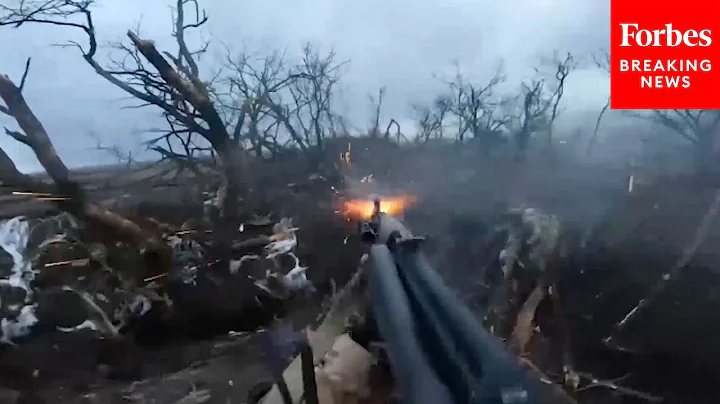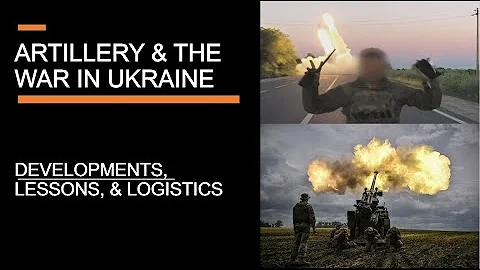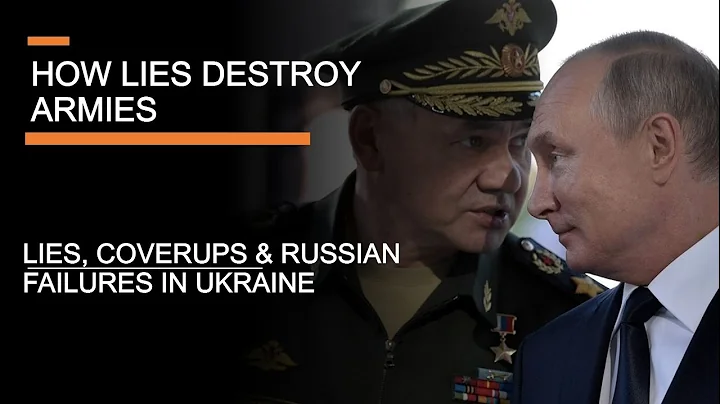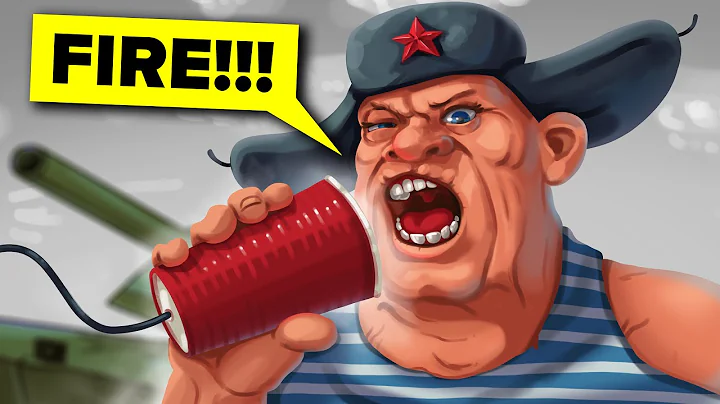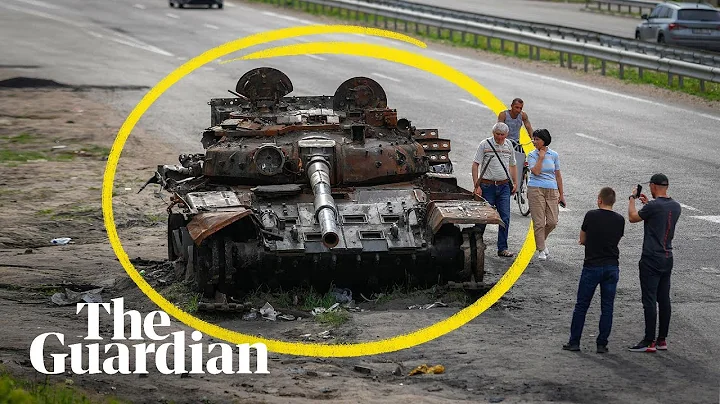Preliminary Conclusions
Russia has failed to achieve most of its goals in Ukraine due to poor military planning, severe logistical problems, low combat readiness levels, and other shortcomings, which have undermined Russia's military effectiveness. These and other challenges—including Ukrainian military efforts and Western aid—have severely impacted Russian air, ground, cyber, and maritime operations. Russia's failure would force the Russian military to fundamentally rethink its training practices, organizational structure, culture, logistics, recruitment and retention policies, and planning efforts. Still, Russia is seeking to de facto annex parts of eastern and southern Ukraine it controls.
This analysis examines lessons learned in the air, ground, cyber and other domains for Russian forces following Moscow’s February 2022 attack on Ukraine. Key questions it attempts to answer include: What were the most important military lessons learned in the first three months of the war? What implications do these lessons have for the future of warfare? The assessment focuses primarily on the operational level of warfare, particularly the planning and execution of military operations. The operational level links the tactical use of forces to strategic objectives, including firepower and maneuver, logistics, intelligence, command and control, planning, etc.
To answer the main question, the analysis relies on several types of information. One included collecting and analyzing primary and secondary information about the war, including military and intelligence assessments from Western countries. The other is a force deployment map of the battlefield, in which Center for Strategic and International Studies analysts compiled and assessed Russian and Ukrainian tactics and operations. Background interviews with Western government officials and other subject matter experts were also involved. While the war in Ukraine may be far from over, this analysis leads to several tentative conclusions.
First, the Russian military faces considerable logistical challenges, in part due to poor training and planning. For example, during the Russian advance toward Kiev early in the war, Russian ground forces faced significant logistical and command-and-control challenges operating in contested areas within Ukraine. Without access to rail transport and roads clogged with Russian vehicles, Russian ground forces are unable to quickly and efficiently deliver fuel, ammunition, spare parts and other supplies to forward-deployed forces. Supply lines could not keep up with the long battle advance, and logistics vehicles were not properly protected. The effectiveness of Russia's long-range strikes - a key aspect of Russian military operations - is also severely hampered by logistical challenges, including insufficient supplies of precision-guided munitions.
Second, Russia’s ground offensive appears to have been planned and executed based on faulty assumptions about how Ukraine’s military and civilian population would respond and how the West might respond. Seizing and controlling territory is the main political goal of Russian policymakers, however, controlling territory in Ukraine with a hostile Ukrainian population is a serious problem for the Russian military, especially since the conflict begins to resemble a "people's war"
Furthermore, Russian forces failed to effectively conduct joint operations to seize and control Ukrainian territory, including coordination between ground forces, air power, and long-range fires. The Russian invasion force was also too small to achieve its objectives and neglected to seal off Ukraine’s western border and prevent the supply of foreign weapons, systems, fuel and other assistance to Ukraine.
Third, Russia’s offensive cyber operations and electronic warfare failed to disable Ukrainian command and control efforts over an extended period of time or threaten Ukrainian critical infrastructure. Russian military and intelligence agencies conduct cyberattacks and utilize electronic warfare against Ukrainian targets, including destructive cyberattacks on hundreds of Ukrainian government and critical infrastructure systems. But these attacks did not significantly affect Ukrainians 's willingness or ability to fight or communicate. With the help of private companies, Western governments, and other state and non-state actors, Ukraine was able to blunt much of the impact of these cyberattacks through active cyber defenses.
Changing Fronts
In the initial stages of the war, Russian ground forces invaded on four main fronts:
Northern Front: Russian troops advanced from Belarus towards Kiev, led by troops from the Eastern Military District, including the 29th, 35th and 36th Combined Arms Army.
Northeastern Front: Russian forces maneuver westward from Russian territory toward Kiev, led by troops from the Central Military District, including the 41st Combined and 2nd Guards Combined Armies.
Eastern Front: The Russian army, led by the troops of the Western Military District, set out from Donbass and advanced to Kharkov, including the 1st Guards Tank Army and the 20th and 6th Combined Arms Armies.
Southern Front: Russian troops move from Crimea west to Odessa , north to Zaporozhye , and east to Mariupol . They are led by units from the Southern Military District, including the 58th, 49th and 8th Combined Arms Groups, the 7th Air Assault Division and the 11th Air Assault Brigade of the Airborne Corps.

Russian and Ukrainian military deployment map
After a series of setbacks highlighted later in this analysis, the Russian military began to withdraw its troops from Kiev around April 2022 and focused its efforts on eastern and southern Ukraine. Today, the war's distinguishing feature is a roughly 600-mile front that stretches along the Black Sea to the west of Kherson. East through Melitopol, Mariupol and other southern cities; Northeast through the Donbass in eastern Ukraine, including the cities of Luhansk and Donetsk; Continue near Izyum northwest; then intersects the Russian border north of Kharkov. Russia has deployed approximately 110 Battalion Tactical Groups (BTG) in Ukraine, with a total strength of approximately 142,000 troops; utilizing irregular forces, including militias from Donetsk and Lugansk; and digging trenches at and near the contact line and laying mines; building railway lines and repairing bridges and roads to improve Russia's logistics lines.
Russia's nation-building encompasses a wide range of economic, cultural, nationalist, governance and security measures. Moscow replaced the Ukrainian currency, the hryvnia, with the Russian ruble in cities such as Melitopol. It controls critical infrastructure such as nuclear power plants and steel plants and reroutes the internet through Russia. In addition, Russia issues Russian Federation marriage certificates to newlyweds. The Russian flag now flies on many government buildings, while the Ukrainian flag has been taken down and Ukrainian symbols removed from buildings and repainted. Russia is establishing Russian-language schools in these areas and revamping the education system (including curriculum) as Moscow attempts to re-educate locals in Russian-controlled areas of Ukraine. Russian military, intelligence and police officials have penetrated cities and villages to round up and detain protesters and pro-Ukrainian sympathizers.
For Russia, annexing these areas is a fait accompli. Kirill Stremusov, the Russian-appointed deputy director of the Kherson region’s military and civilian administration, said: “It is impossible to return the Kherson region to Nazi Ukraine, and Kiev will no longer be able to carry out its ugly Nazi policies. Imposed on our land." The leader of the Republic of Crimea, Sergey Aksionov, said that the Kherson and Zaporozhye regions will be annexed. Russian Deputy Prime Minister Marat Husnulin said the Kherson region will have "a place in our Russian family." Russian forces are likely to continue a war of attrition in eastern and southern Ukraine in an effort to expand Russia's control over territory.
Military Failure of the Russian Army
Russia failed to achieve what was probably its main political goal: to overthrow the Kiev government with a military campaign of blitzkrieg . Russian forces also face significant challenges in seizing and controlling territory.These problems led to the suspension or dismissal of several senior officers, such as Lieutenant General Serhiy Kissel, commander of the 1st Guards Tank Army, who was dismissed due to the failure of the attack on Kharkov; Freslav Ye, commander of the 6th Guards Army Lieutenant General Ershov failed to capture Kharkov and was dismissed; and Lieutenant General Igor Osipov, commander of the Black Sea Fleet, was dismissed after the flagship Moskva sank.
In addition, about a dozen Russian generals and other high-ranking officers were killed on the battlefield, such as Lieutenant General Andrei Mordvichev, Lieutenant General Yakov Rezantsev, Andrei Suho Major General Vitsky, Major General Vitaly Gerasimov, Major General Kanamat Botashev, Major General Andrei Kolesnikov, and Major General Oleg Miteev.
The dismissal and death of senior Russian military officers on the battlefield may have exacerbated command and control problems already experienced by the Russian military. In an effort to improve overall command and control of Russian operations, particularly air-ground integration, Russian President Vladimir Putin appointed General Alexander Dvornikov in April to oversee military operations. Nonetheless, Russia continued to face command and control challenges during its offensive operations in Donetsk and Luhansk oblast in May and June 2022.
The remainder of this section examines Russia's difficulties in the air, ground, and cyber warfare domains. It also highlights Russia's challenges in other areas, such as maritime operations.
Air Operations: Russian air operations in Ukraine are characterized by long-range strikes against Ukrainian military and civilian targets to weaken the Ukrainian military's ability to wage war, weaken the morale of the Ukrainian population, and punish the country's pivot to the West. Over the past few years, Russia has developed command, control, communications, computers, intelligence, surveillance and reconnaissance (C4ISR) systems on the battlefield, providing data to enable higher numbers of air strikes. The General Staff of the Russian Armed Forces commented: "The main feature of future conflicts will be the widespread use of precision weapons and other types of new weapons."
In order to identify targets in a relatively contested environment, the Russian military also uses a number of airborne platforms , including UAV .
In the early stages of the war, Russia targeted ballistic missiles and cruise missile attacks throughout Ukraine, including Tu-95 and Tu-160 bombers deployed on Kh- flying from Russian and Belarusian airspace. 101 cruise missiles to suppress air defense systems across Ukraine. The Russian Air Force subsequently expanded its target list to include Ukrainian military infrastructure, weapons shipments from the West, fuel facilities, bridges, and even civilian targets. Russia launched more than 1,100 missiles at Ukrainian targets in the first 21 days of the war, and a total of 2,125 missiles in the first 68 days of the war.
However, the Russian military faces many challenges in conducting an air campaign.
First, the Russian air force has failed to achieve air superiority against the Ukrainian military, which possesses considerable air defense capabilities such as the Stinger man-portable air defense system, the S-300 surface-to-air missile system and other systems, in part due to Western aid. The success of Ukrainian air defense systems has prevented Russian aircraft from flying freely over much of the territory controlled by Ukraine. This means that one of the main ways Russia penetrates into Ukraine is through cruise missiles launched from Russian, Belarusian and maritime vessels in the Black Sea.
Second, the Russian Air Force faces recurring logistical challenges, including insufficient stocks of long-range precision-guided munitions. For example, three weeks into the war, the Russian Air Force began to experience shortages of precision-guided munitions such as lasers and satellite-guided bombs, which led to the Russian military using an increasing number of unguided artillery shells, rockets, and Iskander-type missiles from Russian ground forces. M short-range ballistic missile systems and other weapon systems.
The Russian military is also reluctant to use part of its reserves to defend against NATO and other threats. In addition, dozens of Russian drones, including the Orlan-10, Orlan-20, Orlan-30, Eleron-3 and Forpost, were shot down or electronically jammed on the battlefield.These challenges are exacerbated by the inability of Russia’s domestic arms industry to quickly replenish these drones.
In the longer term, Russia may face supply chain challenges due to U.S. and other Western sanctions. For example, the 9M729 cruise missile launched from the Iskander-K short-range ballistic missile system is one of the Russian military's most advanced weapons systems with precision strike capabilities. The cruise missile has about six socket attachment points that allow data to pass through the heat shield, some of which are made by American companies. Additionally, the rails that secure the circuit board to the computer case, as well as the circuit board, are manufactured by American companies. The 9M949 300mm rocket used in Russia's Tornado-S multiple launch rocket system also uses the American-made fiber optic gyroscope . Finally, Russia's TOR-M2 air defense system uses a British-designed oscillator located in the computer that controls the radar . These supply chain challenges could impact Russia's short- and long-term parts supply for standoff attacks, forcing Russia to find alternative markets.
These challenges undermine Moscow's efforts to establish air superiority in Ukraine, conduct effective precision strikes and support advancing Russian ground forces.
Ground operations: In the early days of the war, the Russian army relied on roads on the northern front to avoid the swamps and forests of Ukraine. Although the superiority of armored vehicles in numbers, artillery and artillery firepower enabled the Russian army to advance quickly towards Kiev, the Ukrainian army used anti-tank ambushes, causing heavy casualties to the Russian army. As Russian troops moved through Ukrainian villages and towns, local civilians provided intelligence on their locations and movements, while Ukrainian special forces and drones marked targets for artillery. As shown in Figure 2, many Russian vehicles are marked with a "Z" designation to indicate that they are Russian military vehicles.
Most of Russia's ground forces are made up of battalion tactical groups, which are combined arms units typically drawn from existing brigade companies and battalions. Although the structure of a battalion tactical group varies depending on operational requirements and available personnel, most include approximately 600 to 800 soldiers, and in the Ukrainian battlefield, the strength may be closer to 600 soldiers. They are typically mechanized battalions with 2 to 4 tanks or mechanized infantry companies and attached artillery, reconnaissance, engineer, electronic warfare and rear support platoons - including motor transport, field, vehicle recovery, maintenance and sanitation squads. In theory, the result is a fairly self-sufficient ground combat force, with firepower and rear support. In practice, the battalion tactical group may be understrength and lack sufficient infantry.

Z logo on Russian armored vehicles
Overall, Russian ground forces have encountered serious problems in Ukraine.
First, Russian forces face huge logistical and maintenance challenges when operating in contested areas within Ukraine. Russia's approach to combined arms operations typically involves striking Ukrainian positions with artillery and other standoff weapons, then sending armored vehicles out in maneuvers known as "reconnaissance contacts" designed to overwhelm Ukraine's remaining defense lines. However, due to the effective use of anti-armor munitions such as anti-tank missiles and loitering munitions by the Ukrainian army, it is difficult for Russian ground forces to advance and occupy territory. This was true even if the speed of some Russian armored units allowed them to enter the outskirts of Kiev just 48 hours into the war. Some of these Russian units were isolated, with limited or no logistical support, several miles ahead of the main Russian ground units.
The Russian army also has fewer support soldiers than many other armies. The roughly 150 soldiers in a battalion tactical group could be considered a support force, which is significantly lower than some militaries like the U.S. Army, which deploys about 10 support soldiers for every combat soldier. Unable to use the rail transport that normally carries Russian heavy equipment, the Russian military is increasingly struggling to deliver food, fuel, ammunition, spare parts and other supplies to forward-deployed troops due to traffic jams and few available roads.These problems are compounded by the Russian military's failure to provide fleet security for logistics vehicles transporting food, water, medical supplies, mobile kitchens, fuel, engineers and spare parts. Russian vehicles deployed at the front broke down and many had to be abandoned due to a lack of spare parts, mechanics and rescue vehicles.
Simply put, the Russian military failed to secure its critical logistics lines. For example, Russia's advance on Kiev is becoming increasingly costly. By the time Russian forces captured the Khostomeir airport in late February 2022 and prepared to launch an attack on Kiev, they lacked the combat capabilities to seize the city. Russian troops entered the firing range of Ukrainian artillery units, exposing their depth. Russian forces also encountered many logistical challenges in their efforts to capture and control the city of Kharkiv. A Western ban on the export of sensitive technology to Russia could also undermine Moscow's ability to wage a protracted ground war. For example, two of Russia's largest tank manufacturers were forced to halt production due to a lack of parts.
Secondly, the Russian invasion force is too small to seize and control territory, especially when the Ukrainian people are against the Russian army. Russia used 150,000 to 190,000 soldiers (both regular and irregular forces) to attack Ukraine, which has A country with a population of approximately 44 million and an area of over 600,000 square kilometers. These numbers translate into a force ratio of four Russian soldiers per 1,000 Ukrainian residents.
There is no exact formula for how many soldiers it takes to occupy a conquered territory, but sometimes 20 soldiers are needed to deal with 1,000 local residents. Large numbers of troops are usually needed to establish basic law and order. For example, by the end of World War II, in areas of Germany controlled by the United States, there were an average of 101 American soldiers to deal with 1,000 local residents. In Bosnia in 1995, it took an average of 19 American and European soldiers to deal with 1,000 local residents; in Kosovo in 2000, it took an average of 20 soldiers to deal with 1,000 residents.
's lower ratios are usually not enough to appease hostile crowds. In Iraq, for example, there are an average of only 7 U.S. troops to deal with 1,000 locals and face an ongoing deadly insurgency—even with the help of Iraqi government forces and Sunni militias. U.S. Army Chief of Staff Gen. Eric K. Shinseki warned Congress in February 2003 that "hundreds of thousands" of troops may be needed in postwar Iraq. In Afghanistan, there is an average of only 1 US soldier per 1,000 inhabitants, and the US military is also assisted by the Afghan National Security Forces. With such low numbers, the United States and its NATO allies face a protracted insurgency that led to the overthrow of the Afghan government in 2021. The proportion of Russian soldiers in Ukraine is too small to maintain long-term control of territory, including cities.
The low ratio is also problematic because of the large number of Russian military conscripts deployed to Ukraine. The Russian military conscripts are inefficient and have low morale. Unless Moscow officially declares war, Russian conscripts are generally barred from serving abroad unless they volunteer. Nonetheless, their compulsory military service usually lasted only one year, and the conscripts were generally not effective fighters. Russian soldiers were given limited advance notice of an attack on Ukraine, thereby disrupting combat readiness and logistics planning.
Third, the Russian military failed to conduct basic maneuver warfare against the Ukrainian military, preferring instead to bomb Ukrainian cities and villages in a war of attrition. The problem on the ground is complicated by the Russian military's failure to conduct effective combined arms operations and synchronized effects, and Russia's challenge raises serious questions about its firepower and mobility capabilities. For example, where are the Russian infantry who are supposed to fight the Ukrainian ambush? Where is the artillery, mortars and close air support firepower that is supposed to suppress Ukrainian anti-tank guided munitions?
Part of the challenge may be poor leadership within the Russian military, as well as Russia's highly centralized command and control structure and lack of a professional corps of non-commissioned officers. There are also signs of declining professionalism among Russia's officer corps, including a ban on drivers evacuating injured Russian soldiers to protect military equipment.
The quality of the Ukrainian army has changed significantly compared with Syria, where Russian, Syrian, Iran, Lebanese Hezbollah and militia forces from Iraq, Afghanistan, Palestinian territories and other areas face relative competition Weak insurgent combination. Russian mechanized formations in northern Ukraine are being targeted by lethal Ukrainian light infantry equipped with modern weapons systems such as the Javelin anti-tank missile system, the Next Generation Light Anti-Tank Weapon (NLAW) and the Stugna-P anti-tank missile system.
Attacks in Ukraine during Russia's initial advance also made the Russians reluctant to push sensitive electronic warfare and air defense systems into Ukraine in case they were captured. As a result, Russia had to abandon its electronic suppression of Ukrainian radars and communications. Senior Russian officers began to deploy forward, where they became targets of snipers and artillery fire.
Additionally, Russian forces have encountered a number of command and control problems, including a lack of secure communications, which impairs their ability to synchronize and coordinate attacks. Russian soldiers often use unencrypted communications - including on civilian cellphones - which allows Ukrainian intelligence and military units to target them.
Russia's difficulties in seizing territory are causing problems at sea. For example, on April 13, the Ukrainian army used Neptune anti-ship missiles to attack the Russian Black Sea Fleet’s flagship guided missile cruiser Moskva. The Russian Navy lost several other ships after being struck off the Ukrainian standoff zone, including the Alligator-class landing ship RTS Saratov; two Raptor-class patrol boats; and a Serna-class landing craft. A Ukrainian Bayraktar TB2 drone apparently sank a patrol boat and a landing craft .
Cyber and Space Challenges: Russia has conducted numerous cyber operations, including cyberattacks and espionage operations, in conjunction with Russian land, air, and sea attacks. For example, the day before the military intrusion, cyberattackers linked to the Russian General Staff Intelligence Service (GRU) launched a destructive deletion attack on hundreds of systems across the Ukrainian government and Ukraine’s energy, information technology, media, and financial sectors. Russian targets could weaken Ukraine's political will, degrade Ukraine's combat capabilities, and collect intelligence that Russia could use to gain tactical, operational, and strategic advantage. Over the following weeks, Russian actors associated with the Russian General Staff Intelligence Service, the Foreign Intelligence Service (SVR), and the Federal Security Service (FSB) conducted multiple cyberattacks using the malware family.
These types of malware are designed to perform a range of malicious activities, such as overwriting data and rendering machines unbootable, deleting data, and disrupting or attempting to disrupt critical infrastructure such as industrial production and processes. Russia-linked hackers used a range of common intrusion techniques, such as exploiting public-facing web-based applications, sending spear-phishing emails with attachments or links, and stealing credentials and using valid email accounts . In the first month and a half of the war, more than 40 percent of Russia's damaging cyberattacks targeted Ukraine's critical infrastructure sectors, while another 32 percent targeted Ukrainian government websites. 48
Russia also conducted electronic warfare against the Ukrainian army. Over the past few years, Russia has invested heavily in electronic warfare systems capable of interrupting widespread communications and signals. This capability is classified under the concept of radio electronic battery. 49 For example, in the early hours of February 24, 2022, Russia jammed Ukrainian air defense radars on all frequency bands. Russian E95M drones simulating Russian aircraft harassed Ukrainian radars to expose Ukraine's air defenses.
However, to a large extent, the Russian army’s cyber warfare failed. The Russian military faces considerable operational challenges, in part because of external state and non-state assistance to Ukraine in identifying cyber and electronic warfare attacks, identifying the perpetrators, and assisting with remediation. Several Western governments, including U.S. Cyber Command and the National Security Agency, provided assistance to the Ukrainian government.As Gen. Paul Nakasone, commander of U.S. Cyber Command and director of the National Security Agency, said: "We coordinated with the Ukrainians to help them harden their networks, and we deployed a hunting team to work alongside our partners to gain critical insights. Strengthening U.S. and Ukrainian homeland defense capabilities."
Private sector companies also responded. Microsoft worked closely with cybersecurity personnel from the Ukrainian government and other governments and private companies to identify and remediate Russian threat activity against Ukrainian networks before and after the Russian intrusion. In January 2022, the Microsoft Threat Intelligence Center targeted more than a dozen Ukrainian networks and alerted the Ukrainian government. Microsoft has established a secure line of communication with Ukrainian cyber officials to provide real-time threat information and provide technical support to assist Ukraine in identifying and defeating Russia-related cyber attacks during the war. Microsoft worked with Ukrainian government officials to enable Controlled Folder Access, a feature of Microsoft Defender, and helped Ukraine run an endpoint detection and response solution.
In addition, Musk's Space shaped antenna. The activation of Starlink enables members of the Ukrainian military to conduct complex intelligence collection and fire support operations against Russian positions. Many of the Starlink kits donated to Ukraine include a 23-inch-wide receiver dish that needs to be mounted externally, and a simple router to connect to that projects a Wi-Fi internet signal. Starlink helped thwart Russian attempts to jam signals, block the internet and disrupt Ukraine’s command and control capabilities.
